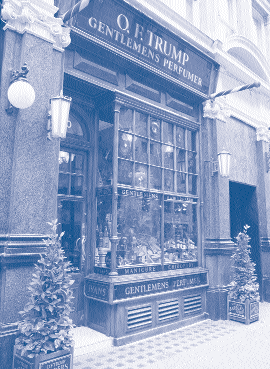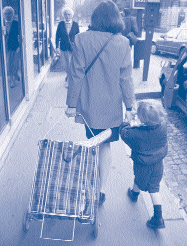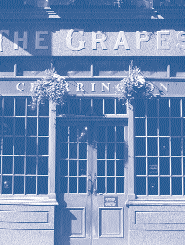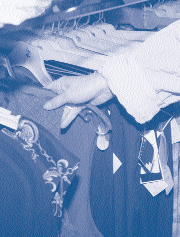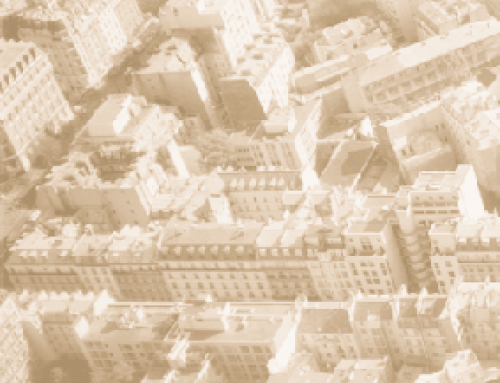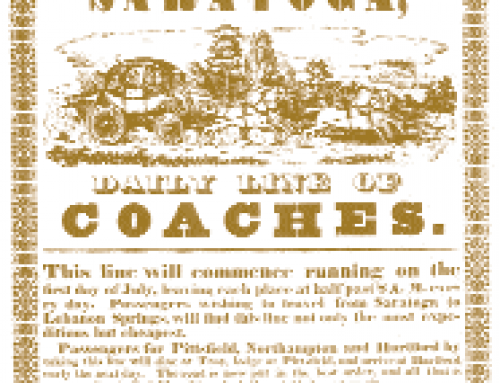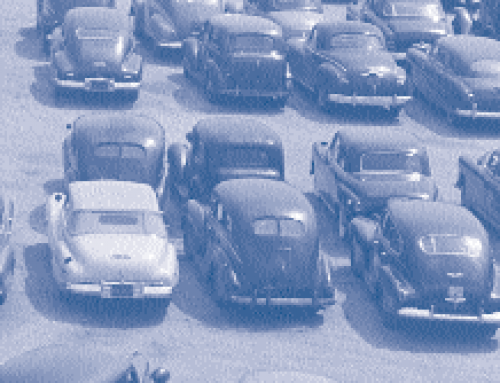The alternative to sprawl is simple and timely: neighborhoods of housing, parks and schools placed within walking distance of shops, civic services, jobs and transit—a modern version of the traditional town. The convenience of the car and the opportunity to walk or use transit can be blended in an environment with local access for all the daily needs of a diverse community. It is a strategy which could preserve open space, support transit, reduce auto traffic and create affordable housing.
—Peter Calthorpe
The New Urbanist goal to create pedestrian-friendly transit villages is hard to criticize. Transit villages promise reduced traffic congestion and heightened quality of life. Their formula is simple: Create clusters of houses, shops, jobs, and social services amidst neighborhoods where transit riders and pedestrians outnumber drivers.
Proponents’ assert that such districts will change travel behavior and enhance daily activities, ultimately reducing traffic. First, they expect neighborhood retail shops will meet most shopping and service needs of nearby residents. Second, they expect higher density residential developments will attract enough people living within walking distance to support a variety of businesses. Third, they expect people living and working in such neighborhoods will make fewer and shorter automobile trips— that they’ll choose walking, cycling, or transit riding more frequently than do residents of lower-density neighborhoods. New Urbanist designs attempt to recreate elements of traditional neighborhoods built prior to World War I. These are typically marked by mixed land use, grid street pattern, and higher than usual density. If possible, they are located at rail-transit stations.
As New Urbanists have become more vocal, so have their critics. They suggest that most people don’t wish to live in high-density neighborhoods or near commercial areas. They observe that forecasts of rail-transit riders have been highly exaggerated. They note that where people do use transit, they do so mostly when going to and from work, seldom for routine shopping. Furthermore, they say that people choose to shop where they can readily find their preferred goods at acceptable prices, not simply at the nearest store. Finally, they contend, higher-density residential development will not eliminate traffic congestion because people will still own and use cars.
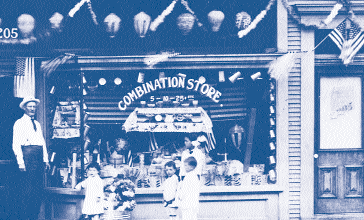 In an attempt to assess whether the New Urbanist predictions are plausible, I studied six shopping districts located in established, traditional San Francisco Bay Area neighborhoods that exemplify New Urbanist ideals. The districts incorporate the basic design attributes they deem important. Each has a variety of community services and office employment, and each is within walking distance of a neighborhood built on a grid-street pattern. With the exception of an old suburban shopping mall located adjacent to a Bay Area Rapid Transit (BART) station, each has continuous sidewalks fronting clusters of retail shops. Together, they represent the array of sizes and activities considered appropriate to transit villages or main street shopping areas. Each is surrounded by medium-density residential development (thirteen to twenty-one persons per gross acre) with households having incomes near the regional median. Four centers are within a half mile of a BART station, offering a test of the transit-village model.
In an attempt to assess whether the New Urbanist predictions are plausible, I studied six shopping districts located in established, traditional San Francisco Bay Area neighborhoods that exemplify New Urbanist ideals. The districts incorporate the basic design attributes they deem important. Each has a variety of community services and office employment, and each is within walking distance of a neighborhood built on a grid-street pattern. With the exception of an old suburban shopping mall located adjacent to a Bay Area Rapid Transit (BART) station, each has continuous sidewalks fronting clusters of retail shops. Together, they represent the array of sizes and activities considered appropriate to transit villages or main street shopping areas. Each is surrounded by medium-density residential development (thirteen to twenty-one persons per gross acre) with households having incomes near the regional median. Four centers are within a half mile of a BART station, offering a test of the transit-village model.
While each shopping district offers grocery stores, restaurants, and convenience services such as banks and pharmacies, they vary in scale and character. The smallest, Kensington, is a classic neighborhood center with twelve retail businesses, including a hairdresser and a video store, along with small medical and other offices. The largest, El Cerrito Plaza, is an old 1960s-style shopping mall directly across from a BART station, but separated from it by a large parking lot. The mall has deteriorated in recent years, especially following the closure of its only department store.
Between those extremes, Market Hall is an upscale neighborhood center immediately adjacent to a BART station. Lining a busy two-lane commercial street, it offers a variety of clothing, antique furniture, and specialty food shops, along with trendy restaurants and many convenience services. Apartments and offices are located on the floors above many of the retail stores. Less than half a mile away, the Alcatraz area is equally bustling, offering similar retail outlets, restaurants, large supermarket, and convenience services. There is no BART station in the immediate vicinity.
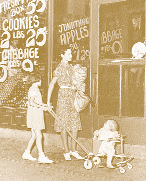 Slightly smaller, Elmwood has a quaint, old-town feel, offering a mix of folk art, gifts, clothing, convenience services, and casual restaurants. There is also a movie theater and a post office. The Hopkins area is similar in size, but contains a well-known produce market, specialty food shops, and a horticultural nursery that attract many visitors from outside the area.
Slightly smaller, Elmwood has a quaint, old-town feel, offering a mix of folk art, gifts, clothing, convenience services, and casual restaurants. There is also a movie theater and a post office. The Hopkins area is similar in size, but contains a well-known produce market, specialty food shops, and a horticultural nursery that attract many visitors from outside the area.
I drew data describing the shops and offices and their users from a land-use inventory, formal surveys, open-ended interviews with merchants, and an intercept survey of 1,000 customers in the six shopping areas asking about travel and shopping behavior on the day of the survey. These were followed by a more specific survey that provided demographic and socioeconomic details, descriptions of usual travel patterns, and attitudes towards the shopping district. In addition, users of the BART stations near these shopping areas described their modes of access to BART and their uses of the adjacent shopping areas.
Some Shoppers Do Walk
Consistent with New Urbanists’ expectations, I found that significant numbers of customers in each of these shopping districts did indeed walk there. Excluding the old suburban shopping center, to which only about 10 percent of customers walked, 25 to 50 percent of customers reached the other five shopping districts on foot. Residents living within a mile of the shops were most likely to walk; almost 66 percent of residents of three neighborhoods did so. The average walk was a third of a mile; the longest, about two miles; 75 percent walked less than half a mile.
 These numbers somewhat understate walking frequency, however, because they include visitors from outside the surrounding neighborhood who obviously couldn’t walk. In five of the districts over 85 percent of these outsiders drove. About 15 percent of visitors to Market Hall came by BART, in conjunction with their commute trip; the station is only a crosswalk away. Two shopping areas selling goods primarily for residents’ daily needs (Kensington and Alcatraz) attracted a majority of customers from the surrounding neighborhoods. But two others (Elmwood and Hopkins) attracted almost equal percentages from the adjacent neighborhood as from outside. In Elmwood, residents and nonresidents had distinctly different shopping patterns: residents stopped for convenience goods (dry cleaners, pharmacy, hardware) while nonresidents stopped at clothing and gift shops. Patrons at Hopkins were both residents and nonresidents, and primarily shopped for specialty foods. The two shopping areas attracting most of its customers from outside the neighborhood (El Cerrito Plaza and Market Hall) are adjacent to BART stations—even though one is a rundown shopping mall and the other, a trendy commercial center.
These numbers somewhat understate walking frequency, however, because they include visitors from outside the surrounding neighborhood who obviously couldn’t walk. In five of the districts over 85 percent of these outsiders drove. About 15 percent of visitors to Market Hall came by BART, in conjunction with their commute trip; the station is only a crosswalk away. Two shopping areas selling goods primarily for residents’ daily needs (Kensington and Alcatraz) attracted a majority of customers from the surrounding neighborhoods. But two others (Elmwood and Hopkins) attracted almost equal percentages from the adjacent neighborhood as from outside. In Elmwood, residents and nonresidents had distinctly different shopping patterns: residents stopped for convenience goods (dry cleaners, pharmacy, hardware) while nonresidents stopped at clothing and gift shops. Patrons at Hopkins were both residents and nonresidents, and primarily shopped for specialty foods. The two shopping areas attracting most of its customers from outside the neighborhood (El Cerrito Plaza and Market Hall) are adjacent to BART stations—even though one is a rundown shopping mall and the other, a trendy commercial center.
Despite the popularity of walking, a significant percentage of each neighborhood’s residents drove to the adjacent shopping area. This was especially true in the two areas with adequate parking, where there were more than twice as many drivers as walkers. For those living within a half-mile of the shopping districts without adequate parking, up to 30 percent drove, especially if they were shopping at grocery stores or at several specialty food shops.
Transit Riding and Use of the Shopping Area
Over a third of BART riders walked to the train from adjacent neighborhoods. However, even though they walked to BART, they didn’t stop at 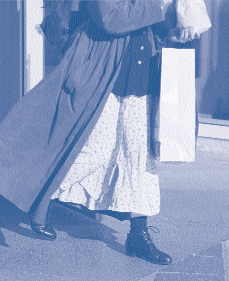 shops near the station. Less than 20 percent of BART riders stopped in the adjacent shopping area in conjunction with the transit trip.
shops near the station. Less than 20 percent of BART riders stopped in the adjacent shopping area in conjunction with the transit trip.
Surprisingly few customers came to the shopping districts by public transit, and they made these trips mostly in the late afternoon and evening commute hours. Overall, only about 5 percent of shoppers used any form of transit, evenly split between bus and BART. On weekday afternoons about 20 percent arrived at Market Hall by BART, but BART riders didn’t walk long distances after that. Only about 3 percent of customers arriving at Alcatraz had arrived by BART, less than half a mile away.
At El Cerrito Plaza, within a quarter of a mile of the BART station, only 2 percent came by BART on weekday afternoons and crossed the large parking lot. Transit users were unlikely to stop in the shopping district even after they arrived on transit and despite the large number of low-rise apartment buildings surrounding El Cerrito Plaza. It seems people are unwilling to walk across extensive parking lots.
Traffic and Parking
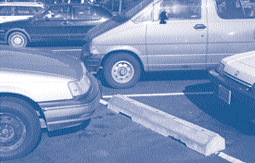 Thus New Urbanist claims are only partly fulfilled in these six traditional shopping districts. On one hand, a significant percentage of customers walk to these centers. However, because half or more the customers at four of the centers come by car from outside the neighborhood, overall traffic and parking effects are less clear. To estimate these effects, I computed trip-generation rates and hourly parking demand for each shopping area.
Thus New Urbanist claims are only partly fulfilled in these six traditional shopping districts. On one hand, a significant percentage of customers walk to these centers. However, because half or more the customers at four of the centers come by car from outside the neighborhood, overall traffic and parking effects are less clear. To estimate these effects, I computed trip-generation rates and hourly parking demand for each shopping area.
These trip-generation rates, based on formulas and categories comparable to those of the Institute of Transportation Engineering (ITE), are based on the square footage of shops in each area and are calculated for weekdays and Saturdays. When these results are compared to numbers of pedestrians actually walking around in these shopping districts on an average weekday, I find more shopping activity in four of these six shopping districts than the ITE method predicted. The other two districts, which show less activity than predicted—El Cerrito 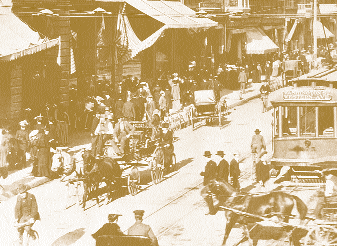 Plaza (the declining shopping mall) and Kensington (the small neighborhood center)—mostly serve adjacent residents during a short commute period each day. When trip generation rates are adjusted to account for persons who do not drive, the level of shopping activity more closely resembles the activity level predicted by the ITE method on weekdays. On Saturdays, the trip generation rates resemble the activity predicted by ITE in two of these four shopping areas. In the two other shopping areas, Market Hall and Hopkins, the level of activity is almost twice the comparable ITE trip-generation rates.
Plaza (the declining shopping mall) and Kensington (the small neighborhood center)—mostly serve adjacent residents during a short commute period each day. When trip generation rates are adjusted to account for persons who do not drive, the level of shopping activity more closely resembles the activity level predicted by the ITE method on weekdays. On Saturdays, the trip generation rates resemble the activity predicted by ITE in two of these four shopping areas. In the two other shopping areas, Market Hall and Hopkins, the level of activity is almost twice the comparable ITE trip-generation rates.
I then calculated parking requirements, based on the observed level of shopping activity and the turnover rate of parked automobiles. I compared calculated parking requirements with the ITE standards and with standards advocated by New Urbanists. The ITE standard recommends between four and five parking spaces per 1,000 square feet of retail floorspace. Many New Urbanists consider the ITE standards to be excessive and thus recommend three parking spaces per 1,000 square feet. In three of the shopping areas (Hopkins, Elmwood, and Market Hall), average hourly parking demand exceeds the minimum recommended by New Urbanists. In one area (Market Hall) demand on Saturdays exceeds even the so-called excessive standards recommended by ITE’s method. Interestingly, the number of parking places in each of these three shopping areas is currently at or below the minimum level advocated by New Urbanists. Two other shopping areas (El Cerrito Plaza and Kensington) generate fewer trips than expected. Alcatraz, with a high percentage of visitors from its neighborhood, has sufficient parking spaces.
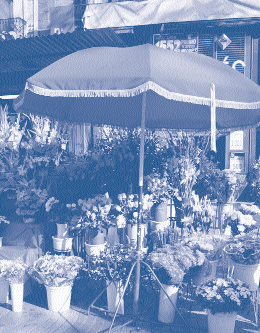
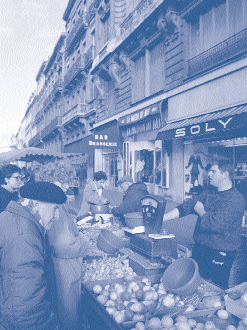
These results are not surprising when one identifies the customers. Areas with high demand for parking not only attract a large number of customers, they also attract a high percentage of customers from outside the adjacent neighborhoods. Further, the type of shopping in these areas leads a customer to stay in a parking place for a longer time; customers shopping for comparison goods such as clothing, furniture, gifts tend to shop more leisurely than those buying food and other necessities.
Conclusion
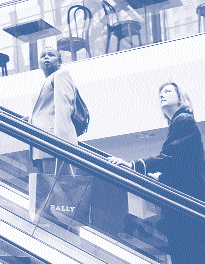 As New Urbanists suggest, traditional shopping areas generate more walking than is usually associated with shopping trips. However, they also attract a significant number of customers who don’t live in the adjacent residential area and who drive there. Even those living in adjacent residential areas may drive, especially if they’re grocery shopping.
As New Urbanists suggest, traditional shopping areas generate more walking than is usually associated with shopping trips. However, they also attract a significant number of customers who don’t live in the adjacent residential area and who drive there. Even those living in adjacent residential areas may drive, especially if they’re grocery shopping.
Despite this high frequency of walking, the promise of less automobile traffic is not realized. Counts and surveys taken during average (not major) shopping days reveal levels of traffic and parking demand in excess of comparable standards for peak demand. Simply put, some of these shopping areas have become popular largely in response to the quality of their goods. Crowded streets and frenetic purchasing contribute to a carnival atmosphere that, in itself, serves to attract even more customers. In turn, large crowds and high quality induce high levels of traffic. Customers come from outside the neighborhood, some from many miles away—in cars that must be parked.
Justification for revitalized Main Streets or transit villages may reside in the sheer physical attractiveness of their urban design in contrast to that of the commonplace shopping mall or retail strip. The transit village’s advantage may lie not in reduced traffic, but in its improved retail environment. High density residences may be necessary if the objective is more walking, because people seem willing to walk only short distances.
Investors in shopping areas can’t rely exclusively on walkers. So they face a dilemma: To pursue pedestrian-friendly urban design that will entice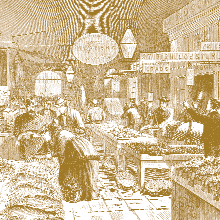 local residents into walking, they may install just a few parking spaces. But to attract customers from outside the neighborhood, they must provide ample parking. However, a design that incorporates large asphalt areas for cars might deter some from moving into the neighborhood because it would then seem uninviting—and unconducive to walking.
local residents into walking, they may install just a few parking spaces. But to attract customers from outside the neighborhood, they must provide ample parking. However, a design that incorporates large asphalt areas for cars might deter some from moving into the neighborhood because it would then seem uninviting—and unconducive to walking.
Of course, every shopping center developer and every shopkeeper is eager to attract lots of customers. They don’t care whether they come by foot or car. But to attract large numbers they must provide plenty of parking. The New Urbanists’s challenge is to incorporate enough parking into the site plan to attract customers without making the physical design unattractive. To design a shopping center only for walkers, or even primarily for walkers, might doom the investment from the start.
Further Readings
Calthorpe, Peter, The Next American Metropolis: Ecology, Community and the American Dream (Princeton, New Jersey: Princeton Architectural Press, 1993).
Katz, Peter, The New Urbanism: Toward an Architecture of Community (New York: McGraw-Hill, 1994).
Crane, Randall, “Cars and Drivers in New Suburbs: Linking Access to Travel in Neotraditional Planning,” Journal of the American Planning Association, vol. 62, no. 1, 1996, pp. 51-65.
Fulton, William, The New Urbanism: Hope or Hype for American Communities (Cambridge, MA: Lincoln Institute of Land Policy, 1996). New Urbanism, Harvard Design Magazine, Winter/Spring 1997 (includes several relevant articles).


